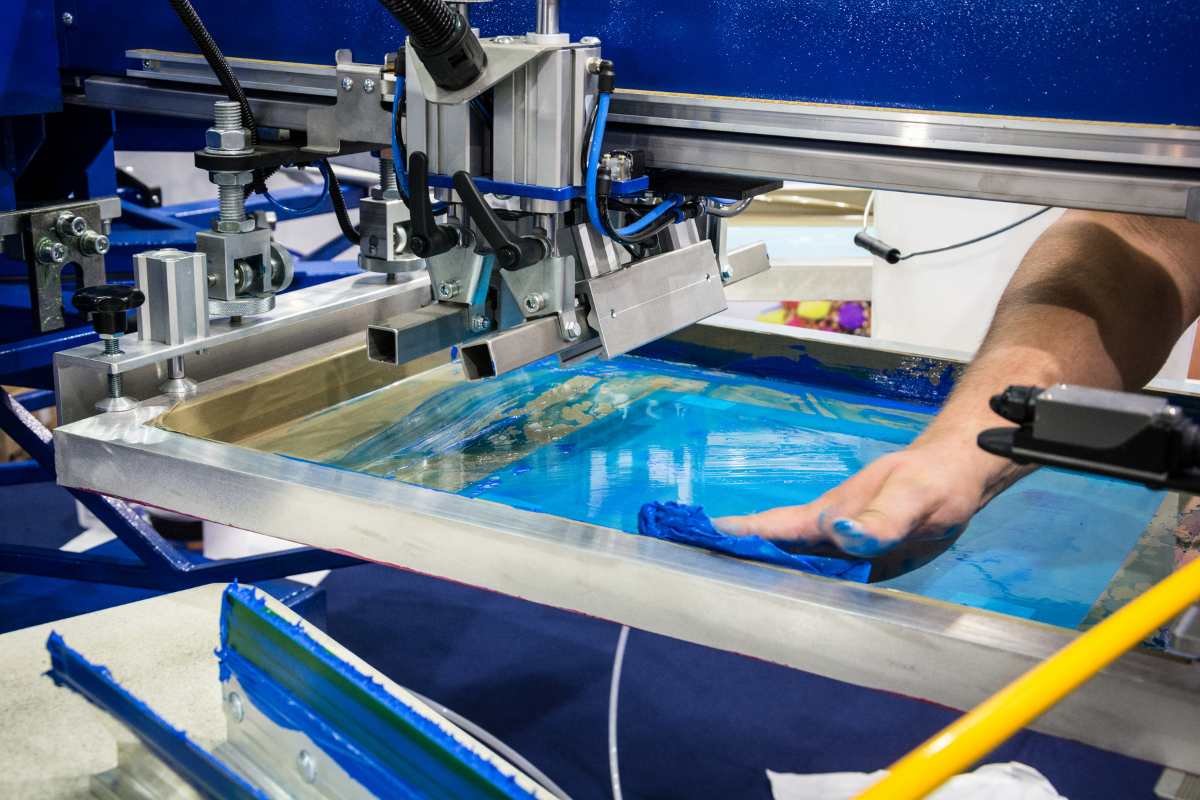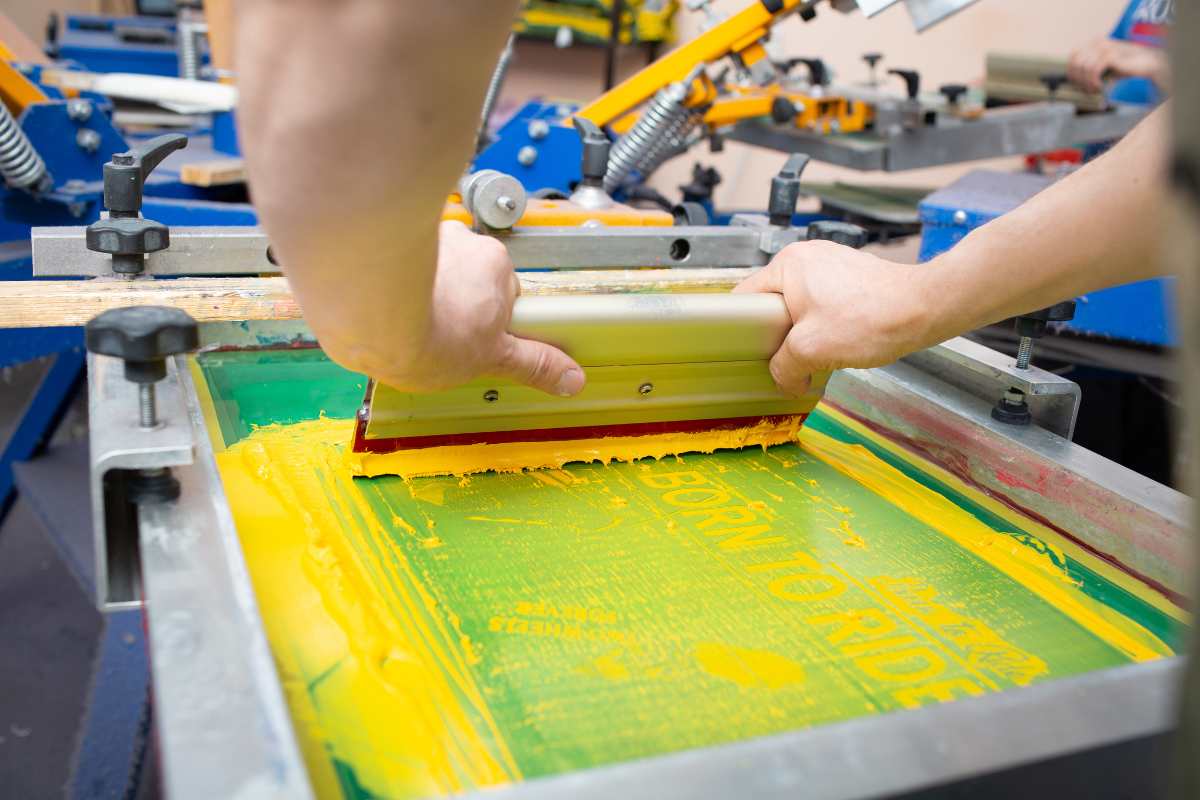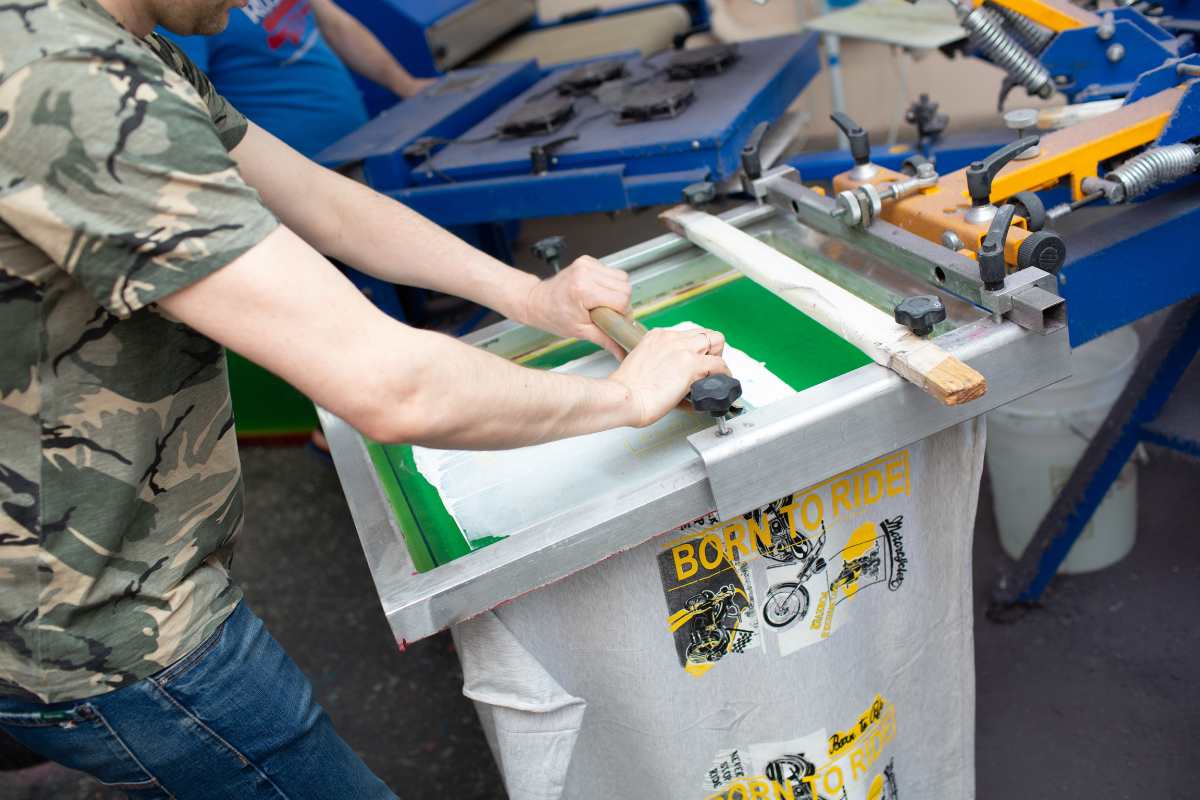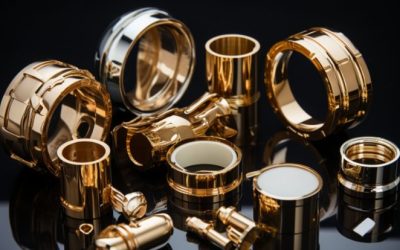If one is to think of silk screen printing, the first things that would probably come to mind are textiles and apparel. However, silk screen printing is very important in metal fabrication as well as other industries as this paper seeks to establish. This guide focuses on the description of what silk screen printing onaluminium and metal is, how it is done, technical details, appropriate inks, benefits, and types of metal used. The objective of this article is to give a clear and detailed insight into this method in metalworking. Welcome to the topic that will reveal the details of the silk screen printing on metal surfaces.
An Insight into the Silk Screen Printing on Aluminium and Metal
Serigraphy or silk screen printing on aluminium and metal is the processes used in aluminum and metal finishing. It is a technique of putting a design or paint on a metal surface with the help of tools such as a blade and squeegee. To apply the paint, a fine polyester mesh is used so that the image is clear and there is accuracy in the transfer.
To avoid any distortion and to ensure that the ink does not spread to the wrong areas on the metal, a stencil is used to cover the unwanted areas. This process enables the production of intricate and perfect designs on the surface of metals.
Critical Supplements for Screen Printing on Metal
Silk screens are primitive in the screen printing on the metal and are vital in offering the fine details of the design. The mesh count is therefore dependent on the complexity of the design and the metal base being worked on. Mesh counts above are desirable for designs that require more detailing as they give the ink a finer point to work with. On the other hand, larger mesh counts are for designs with more ink deposit and heavy designs where the application of ink is important in relation to the design.
Metals and Their Surfaces
Aluminum, stainless steel, brass and all other types of metal surfaces have a unique property that affects the screen printing process. When using the t-shirts, one has to make sure that the area to be inked on is well prepared to enable the ink to stick well and for a long time. Thus, the behavior of ink with the metal substrate must be investigated to achieve the best result silk screen printing on aluminum print quality that can be resistant to environmental conditions and wear.
Inks Suitable for Metal
It is very important to choose the right type of ink when it comes to carrying out screen printing on metal. Inks for metal are not the same as those for fabrics or papers because they have to stick to the metal and also be able to withstand things like water, UV and mechanical stress. They are epoxy based, UV cured and solvent based inks and their characteristics in terms of adhesion and resistance to environmental conditions differ. Selecting the right ink ensures that prints are not affected in any way such as fading or being affected by conditions such as light.
Squeegees and Emulsion
They are also used in screen printing to help spread the ink evenly over the metal mesh of the screen. The type of squeegee and the hardness of it also comes into play in the application of the ink and the quality of the print on the screen being used. Also, when making the stencil through which the printing areas on the silk screen are determined, the choice of emulsion is very crucial. The type of emulsion and the application technique determine the stencils’ durability and the degree of design transfer on metal substrates.
Preparation of the Surface of the Metal For Metal Printing
The process generally divided as follows;
Cleansing and Degreasing
The first step in attaining the best ink adhesion on metal surfaces is to clean and degrease the metal surface. Any form of dirt, oil or any other substance on the surface of the metal hampers ink from sticking to the metal surface thus affecting the quality of prints and their durability. Using metal cleaners and degreasers is efficient in eradicating the dirt hence making the surface ready for the printing process. This step is important because it helps to increase the adhesion of the ink to the metal substrate thus increasing the durability of the prints.
Methods of Fining and Polishing
In order to obtain a perfectly smooth and shiny surface on metal that will give a perfect finish to the printed image, it is necessary to avoid any surface defects. Sanding is one of the most common methods of finishing where the aim is to level the surface of the metal and remove any scratch marks, burrs, or any other unevenness. Various types of sandpapers are used depending on the roughness of the surface to be produced which may be coarse or fine. This preparation method also has the advantage of enhancing the appearance of the print and enhancing the flow and adhesion of the ink during the printing process.
Priming the Metal Surface
Another technique used to improve adhesion and the stability of printed ink is to apply a primer coat on the metal surface. Primers help in forming a bond between the metal substrate and the ink so that there is no issue with the ink coming off in the future. This preliminary step helps to guarantee that the printed designs do not fade and remain eye-catching regardless of the effects of moisture, UV light, and mechanical stress. The surface of the metal to be printed must be properly primed to ensure that the prints made on it will be long-lasting and of high quality in metal screen printing.
Advantages of Silk Screening
Screen printing is a very versatile finishing method that enhances the appearance and anti-corrosive characteristics of metals such as stainless steel, aluminum and brass at CNM. Our expert professionals are well equipped in offering the best silk-screening finishes to fabricated items to improve on their quality.
Precision Color Matching Expertise
The most significant challenge that a silk-screening business encounters is the ability to match the color of the screen printed image to the required color. At CNM, this is done with UV cured inks and a very rigorous color matching process that is followed. This way we are sure that we provide our clients with the best, finishes that not only look good but are precise to the set standard by the client.
Longevity, and Durability with Superior Adhesive Solutions
The longevity of the silk-screened finishes depends with the adhesive bond that is developed. Whether it is nameplates, panel graphic overlays, to metal stamps, CNM has a variety of industrial adhesives that are custom built. Our finishes are designed to last for as long as possible and to be functional in as much as they are aesthetic.
Expert Guidance and Support
CNM has professional and competent staff to offer professional advice and service to the clients. If you are in need of our silk-screening services or if you are unsure of the type of adhesive to use, then you are at the right place. Contact CNM today to find out how we can fulfill your precise metal finishing requirements.
Exploring Metal Selection for Silk Screen Printing
Deciding on the metal to use in silk screen printing involves aspects like the look of the metal, the durability of the metal and the nature of work that it is going to be used for. Here, we explore the characteristics and advantages of aluminum, copper, and stainless steel in detail:In this paper we will discuss the peculiarities and benefits of using aluminum, copper and stainless steel in more detail.
Silk Screen Printing Aluminum: Lightweight Elegance
Aluminium is appreciated for its low density, non-corrosive nature and the enhancement of bright colours. These properties make it an ideal material for silk screen printing when a modern day look is desired. It is relatively light and therefore easily workable and installable which makes its uses to include signage, name plates, and decorative panels.
Advantages of Aluminum:
- Corrosion Resistance: Aluminum tends to develop a layer of oxide that makes it very immune to rusting and that is why it can be used in outdoor environment.
- Lightweight: It is transportable, manageable and can be easily repaired and therefore can be relatively cheap for large scale projects.
- Vibrant Colors: Aluminum has good reception to colours thus the looks of silk screen prints are improved.
Applications:
- Nameplates: They are very strong and can be used in branding and identification such as on cars, home appliances among others.
- Signage: The material that is used in the making of the signs is aluminum and the colors used do not wash off with the changes in weather and the signs do not become fragile or peel off.
Silk Screen Printing Copper: Vintage Charm
Copper produces a warm and traditional look that makes silk screen designs look like they came from the 70s. Copper is a reddish-brown metal which is quite ductile and this makes it easy to work on and even carve intricate designs. It develops a protective layer over the years, and as a result, it attains a beautiful appearance and character.
Advantages of Copper:
- Aesthetic Appeal: Copper finish is quite classy and blends well with the natural environment, thus it is ideal for use in the luxury products and logos.
- Malleability: Sufficiently malleable that it can be molded to the required intricate patterns that would allow the silk screen prints to be received.
- Durability: Copper does not corrode quickly and maintains its appearance for several decades; that is why it is used in products that are expected to have a long service life.
Applications:
- Labels and Tags: Copper labels and tags are unique in appearance and ideal to be used in classy and quality products including the handmade ones.
- Art and Décor: Copper is used in interior design, the focus is made on the color of the material that is warm red and the surface of the metal.
Silk Screen Printing Stainless Steel: Industrial Chic
Stainless steel is a material that is fairly durable and has a rather metallic feel to it; therefore, it is a material often used in silk screen printing for designs that are modern and edgy. Stainless steel is a material that is very sturdy and does not rust; it is applied in several uses and does not lose its functionality whether used inside the building or outside or in areas that are frequently used.
Advantages of Stainless Steel
- Durability: Stainless steel is a material that has high tensile strength and is also highly resistant to corrosion; thus, it is suitable to be used where strength is a factor
- Modern Aesthetic: It has a smooth surface which makes it to be suitable for the current sleek and chic interior designs.
Applications
- Appliances and Electronics: Appliance and electronics uses stainless steel panels and covers. These surfaces do not wear out the silk-screen prints even when the latter is often used.
- Outdoor Signage: The stainless steel is suitable for the outdoor signs since it does not corrode and one can be able to read the signs irrespective of the prevailing weather conditions.
Metal Substrates for Successful Screen Printing
When screen printing on metal surfaces one has to take into account the various types of substrates, in this case the treated or coated metal. These metal substrates must therefore be known in order to arrive at the right finish. Here, we explore the two main categories of metal coatings: Polymer and plastic.
Thermoplastic Coating
The thermoplastic coatings do not have any chemical interaction with the metals when they are drying hence the formation of the soft surface which can easily take the ink. However, these coatings cannot be said to be chemically immune to aggressive solvents, rubbing or heat. When screen printing, heat or strong solvents are used, and this will make the thermoplastic coating to melt.
Thermoset Coating
Thermoset coatings require heat to cure the material and as a result the material has heat and scratch resistant finish. This type of coating is more resistant than the thermoplastic coatings and has better scuffing and solvent resistance. Thermoset coatings are cured through baking and this makes them to be rigid enough to endure some conditions and this makes them to be suitable for use where there is need for some durability.
The characteristics of the thermoplastic and thermoset coatings must be known in order to choose the proper metal substrate for silk screen printing. Selecting the appropriate type of coating enables printed designs to stick well, not to fade off or to be washed off and to have the right characteristics for the intended use.
Final Thoughts
To sum up, its necessary to familiarize yourself with the several finishing techniques that are applicable to your metal fabrication project regardless of the size of the project. Among all the techniques described above, silk-screening is considered one of the most effective techniques because of the flexibility of the process and the possibility of reaching a very high degree of detail.
ALUDIECASTING is all in one aluminum die casting mold and parts manufacturing company that provides silk-screening services in which the design can be created depending on the direction of the clients, and this is why it is preferred. If you have any questions regarding the details of the silk-screening or if you have plans of using the technique in your next project, including options for silk screen printing on metal near me, feel free to contact us. Thus, our team is always ready to answer your questions and provide assistance to make the correct decision based on your individual case in the framework of your project.







0 Comments